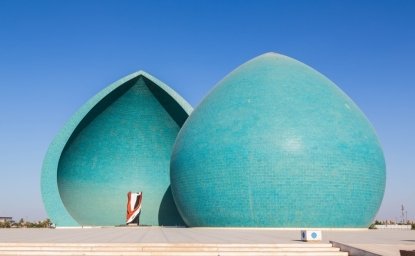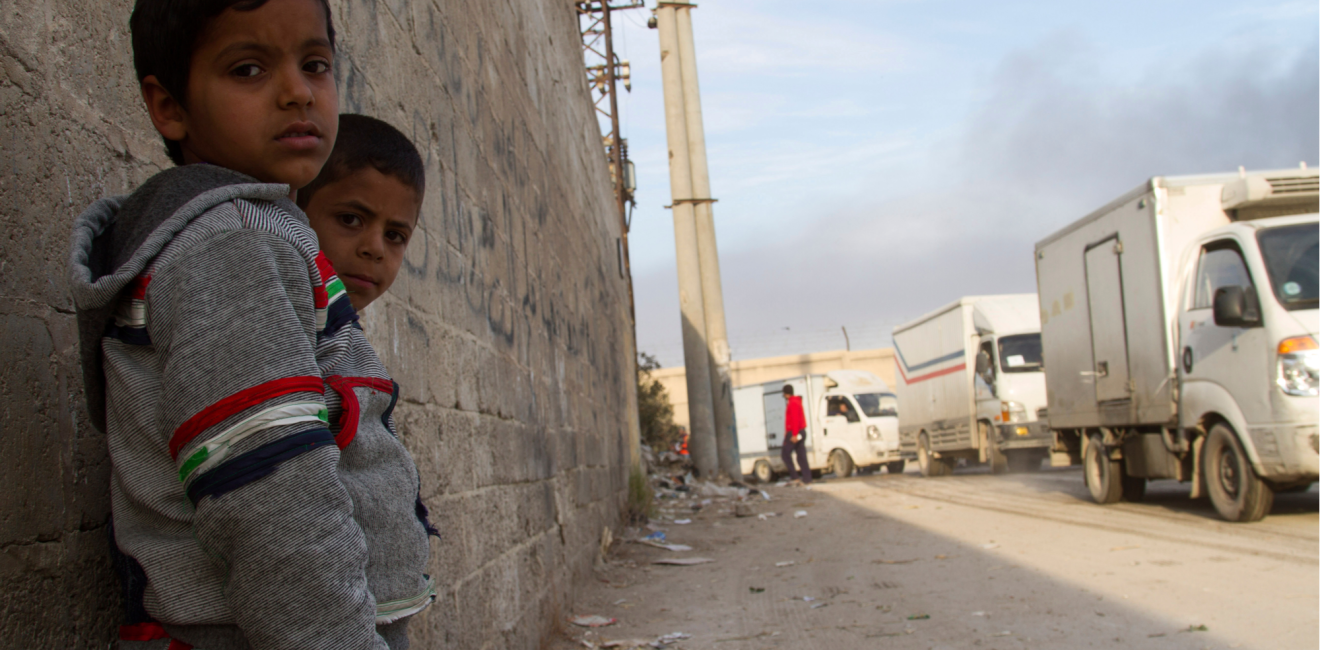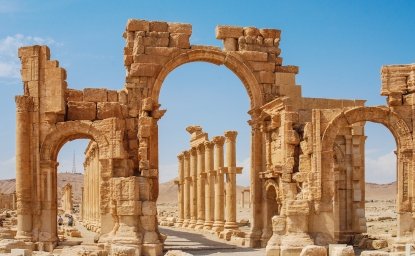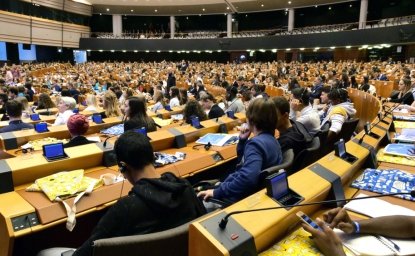On July 10, the UN Security Council (UNSC) will vote on the authorization of cross-border humanitarian corridors in Syria. The UNSC established those corridors out of necessity in 2014 in response to the Assad regime’s tactic, in violation of international law, of starving Syrian resistance fighters into submission by blocking in various ways international humanitarian assistance to opposition areas. COAR Global’s reports confirm this based on experience on the ground in Syria, documenting numerous examples of this practice and the larger strategic goals behind it. The US directly experienced Damascus’ manipulation of humanitarian assistance, with some support from Russia, in 2019-2020 involving the Roukban Internally Displaced Persons (IDP) camp inside the Tanf perimeter, secured by US forces and local Syrian opposition along the Jordanian border. Despite enormous effort by the UN, US military, and other participants, only two humanitarian shipments made it across these lines, and various conditions placed on its movements pressured the IDP’s to return to Syrian control, which in the end a large majority did.
While COAR Global focuses on Damascus, Russia must be held to account as well. After supporting cross-border assistance delivery in the UNSC for six years Russia threatened to veto the renewal of two of the four crossings in January 2020 and allowed extension of the other two for only six rather than the usual twelve months. In July 2020 Russia permitted only the Bab al Hawa crossing to remain open, which supports between two and three million IDP’s in Idlib along the Turkish border. This authorization must be renewed by the upcoming vote. The US and the UN are pushing also for the Yaroubiya crossing in northeast Syria to be reopened (It was closed in January 2020 by the Russian UNSC action). The US has made cooperation with Russia on this a key component of both Syria strategy and the overall relationship with Moscow, with President Biden raising the border crossings with President Putin in their June summit.
Russia’s argument in previous discussions is that the whole cross-border operation is an affront to Syrian sovereignty (technically correct but under international law the UNSC has the authority to limit such sovereignty), and, more importantly, that Syrian aid delivery by the Syrian Government across the line of conflict can meet humanitarian demands. UN officials and aid agency leaders have rebutted this argument forcefully, but Russia continues making it. It is quite possible that, even if at least one crossing is authorized by the UNSC this July, Russia will demand greater reliance on Damascus for cross-line delivery as part of the deal, or will insist more reliance in the future. Thus, this timely and valuable evidence lays out the reasons why the international community, and millions of destitute Syrians, cannot depend on Damascus.
Although it remains a vital lifeline to opposition-held northwest Syria, the mechanism authorizing the entire UN-based cross-border aid architecture is now on the verge of collapsing in the face of a veto threat by Russia.
A War of Siege
Throughout the protracted Syrian conflict, the Government of Syria has systematically manipulated humanitarian aid as a military tactic, a political bargaining chip, and as a means of self-financing. Consequently, since 2016 or earlier, independent analysts within the Syria crisis response have advocated to institutional donors that cross-line aid must be, at the very least, complemented by aid delivered through a cross-border modality. Although it remains a vital lifeline to opposition-held northwest Syria, the mechanism authorizing the entire UN-based cross-border aid architecture is now on the verge of collapsing in the face of a veto threat by Russia. Unless it is renewed through a UN Security Council vote by July 10, the cross-border system will be eliminated, and all UN aid will be delivered exclusively through Government of Syria areas. While aid practitioners are well-acquainted with incidents of aid manipulation by Damascus, such incidents are not common knowledge. As policymakers push for renewal of the cross-border mechanism, it is helpful to consider patterns of aid instrumentalization which demonstrate that cross-line aid delivery through Damascus — backed by Russia — cannot be effective or principled.
In many respects, cross-line aid delivery is an anachronism in the Syria crisis response. From an aid architecture perspective, cross-line aid delivery ceased to be a major consideration following the “siege period” of the conflict, which came to an end in summer 2018 with the reconciliation of opposition groups in southern Syria. As a result, an understanding of the impact of a cross-line aid modality to reach northwest Syria needs reference to earlier stages of the conflict, when many communities were intermittently reliant on convoys as siege starved them of resources and partnership-based support was rendered impracticable.
Examples drawn from these earlier periods demonstrate that several outcomes are endemic to a cross-line aid system in Syria.
- The Government of Syria MUST APPROVE UN interagency convoy requests, allowing it to withhold aid to punish opposition areas.
- Opaque approval mechanisms also allow the Government of Syria to channel aid in a way that rewards strategically significant areas.
- Aid can therefore be weaponized to aggravate tensions between opposition factions and fuel inter-group conflict.
- Damascus-based humanitarian aid is a financial lifeline to the Government, which seizes on incoming aid funding as a contributing factor in the war economy.
- As the “carrot” offered alongside the “stick” of military bombardment and siege, aid is an important pillar of the Government of Syria’s overall military strategy.
Withholding Aid to Punish Opposition Areas
Throughout the siege period, the contents and locations of UN-OCHA aid convoy requests were subject to overlapping approvals made through a rigorous internal Government of Syria review involving the Ministry of Foreign Affairs, various security branches, and the appointed governor of the relevant province. This rigorous process allowed Damascus to influence access and aid type based on the political affiliation of beneficiaries. As a result, the Government of Syria’s strategic priorities, not humanitarian needs, determined which populations receive which forms of aid. An example of aid being withheld to punish an opposition area can be seen in the delivery of mosquito nets and hygiene kits through a Russian-mediated convoy that reached Darayya, in Rural Damascus, on June 1, 2016. The convoy was the first to enter the community after four years of siege. Although much of the population was on the verge of starvation and reportedly consuming grass to survive, not a single food item was included in the distribution. Following intense international outcry, a second convoy was quickly organized to bring needed food aid, but no subsequent convoys followed, and the community capitulated to sustained military pressure in August 2016.
Channeling Aid to Reward Strategic Areas
The opaque approval process also allows the Government of Syria to grant access for political or strategic reasons, in effect, allowing Damascus to leverage UN aid to reward the populations of strategically significant areas. For example, Taldu (Houla) lies within a pocket of opposition-held northern rural Homs Governorate. Critically, Taldu is within artillery range of the Zara power station, which is among the most important in Syria and the source of electricity to a broad sweep of Government-held territory, including much of the Syrian coastal region. On March 6, 2016, the Taldu-based opposition negotiated a truce with Government forces that included a stipulation allowing Government of Syria technicians to enter the town to service the Zara power station and surrounding infrastructure. In return, the Government permitted the entry of Damascus-based UN aid convoys. Two convoys reached the town on March 23 and 24, and others arrived fairly regularly thereafter. Of note, Taldu was not originally included in the OCHA-Damascus May 2016 distribution plan, which was subsequently amended by the Syrian Ministry of Foreign Affairs. Nearby opposition-held areas with far larger populations but lacking strategic pressure points over Damascus, such as Ar-Rastan and Talbiseh, received far less assistance.
Weaponization of Aid
Cross-line aid can be weaponized to pit rival armed groups against each other. Perhaps nowhere was this more evident than in the opposition-held enclave of Eastern Ghouta, an important hub of agricultural production on the eastern outskirts of Damascus city. In April 2016, Eastern Ghouta was divided into two distinct enclaves, each presided over by competing armed opposition factions: a northern half mostly controlled by Jaysh al-Islam and a southern half predominantly under the control of its rival, Faylaq al-Rahman. The Government of Syria’s siege strategy in opposition areas sought to leverage the desperation of civilian populations to pressure armed opposition groups. In spring 2016, the smuggling networks needed to circumvent the intense government siege on Eastern Ghouta were disrupted by intergroup tensions between the two armed groups. Tensions flared following the publication of the May 2016 UN interagency plan, approved by the Government of Syria, which proposed aid delivery to 12 locations in Eastern Ghouta, 11 of which were under the control of Faylaq al-Rahman. On April 28, days after the plan was published, intense clashes lasting several weeks broke out between the groups. The opposition infighting that followed resulted in several hundred casualties and significantly strained opposition readiness. Approximately two weeks later, the Government of Syria launched a military offensive and captured much of Eastern Ghouta’s most valuable farmland, thereby increasing the area’s reliance on aid convoys and war economy channels for the two years of siege that followed.
Figure 1. Opposition help areas and aid convoy approvals in Eastern Ghouta

International appeals over the suffering in these areas inadvertently enriched Government-affiliated exchange offices, traders, and war profiteers.
Profiting from the War Economy
Aid channeled through Damascus faces a considerable risk of systematic capture by the Government of Syria and its affiliates. Insofar as aid activities are concerned, two periods of war economy activities are especially pertinent. The first was the period of intense, widespread siege of opposition enclaves, which lasted roughly from 2013 to 2018. In this period, besieged, opposition-controlled areas in south and central Syria gradually became a financial appendage of the Assad regime and its affiliated businessmen. This was true not merely because UN agencies and international organizations procure aid materials through Damascus, but also because Damascus was the central hub for funds flowing into besieged areas. Money generated through regional donations to armed opposition groups, diaspora remittances, and philanthropic aid all reached besieged areas through informal money transfer or hawala agents, that operate through Damascus. In turn, this money was used to purchase goods through Damascus-approved businessmen at inflated prices. In effect, international appeals over the suffering in these areas inadvertently enriched Government-affiliated exchange offices, traders, and war profiteers.
Figure 2.

As the siege economy waned with the reconciliation of most major opposition areas, a new form of aid manipulation set in. Since late 2017, the Government of Syria has systematically manipulated currency exchange rates to siphon off a staggering amount of incoming aid funding. Re-routing aid through Damascus if the cross-border mechanism lapses will dramatically increase the volume of donor funds captured automatically by the Central Bank of Syria. Aid actors implementing in Government of Syria areas must operate using Syrian pounds (SYP). Through the deft manipulation of currency exchange rates, the Government of Syria currently siphons off roughly 21 percent of the value of incoming aid funding, which is converted by the Central Bank at the so-called “preferential” rate of 2,500 SYP/USD; the actual market rate hovers near 3,175 SYP/USD at the time of writing, in late June. When the preferential rate used for incoming aid was last raised — from 1,250 SYP/USD in March 2021 — the market exchange rate was roughly 4,300 SYP/USD. This extreme arbitrage is the most severe gap that has existed during the conflict, and it would allow the Central Bank of Syria to siphon off 73 percent of the value of incoming funding routed through Damascus.
The Government leveraged popular suffering in besieged areas to undermine support for armed opposition factions and intensify the bottom-up pressure on rebel leaders to capitulate to Damascus.
Aid Manipulation to Force Reconciliation
Manipulation of aid was a main pillar of the Government of Syria’s reconciliation strategy, which was arguably the capstone of its divide-and-conquer approach to defeat the opposition. Accordingly, the Government of Syria utilized tactical ceasefires to isolate active conflict to select areas and to limit the scope of its overall military engagement at any one time. Thereafter, the Government of Syria intensified siege conditions on targeted opposition areas, including by blocking humanitarian access. In parallel, it heightened military bombardment, often acting with direct support by Russia or its Iran-backed allies. Through this carrot and stick approach, the Government leveraged popular suffering in besieged areas to undermine support for armed opposition factions and intensify the bottom-up pressure on rebel leaders to capitulate to Damascus. Reconciliation inevitably culminated in surrender agreements that dismantled opposition-era governance and administrative structures and displaced significant portions of the civilian population, ultimately to Idlib, where many are once again at risk of being held hostage to an aid architecture controlled by Damascus.
Examples of aid manipulation as a fundamental element of reconciliation proceedings are numerous. The promise of humanitarian relief was an implicit — and often explicit — dimension of local reconciliation agreements throughout central and southern Syria. Indeed, the arrival of UN convoys frequently followed in the weeks, or days, immediately after the signing of reconciliation terms. Prominent examples include Darayya, At-Tall, Eastern Ghouta, and communities in northern Rural Homs. For instance, in interviews during the intense final days of siege, members of the Darayya local council stated that UN staff had explained to them that UN aid convoys would be conditioned upon a reconciliation agreement that entailed the surrender of local armed opposition groups.
Conclusion
The UN Security Council authorized cross-border aid delivery in 2014 precisely because the Government of Syria had systematically blocked aid delivery and politicized access as a weapon of war. That system is now at risk of lapsing. No doubt, northwest Syria will face novel challenges if Russia vetoes renewal of the cross-border mechanism. Aid practitioners will be forced to confront growing needs with fewer resources and less institutional support. How they will navigate a worsening humanitarian crisis on top of continuing conflict conditions is not clear. What is apparent is that delivering aid through Damascus is not a viable substitute.
The views expressed in these articles are those of the author and do not reflect an official position of the Wilson Center
[1] COAR Global is a political risk and development consultancy that supports the design and implementation of humanitarian and development projects in complex and conflict-affected environments and is currently supporting aid policy and programming in Syria, Lebanon, Libya, and Myanmar.

Authors


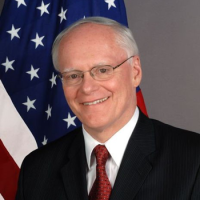
Former ambassador to Iraq and Turkey, and Special Envoy to the Global Coalition To Defeat ISIS

Middle East Program
The Wilson Center’s Middle East Program serves as a crucial resource for the policymaking community and beyond, providing analyses and research that helps inform US foreign policymaking, stimulates public debate, and expands knowledge about issues in the wider Middle East and North Africa (MENA) region. Read more

Explore More
Browse Insights & Analysis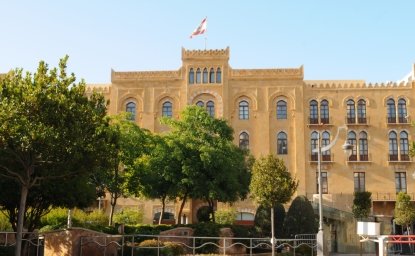
Women are the Catalysts for Change in Lebanon
